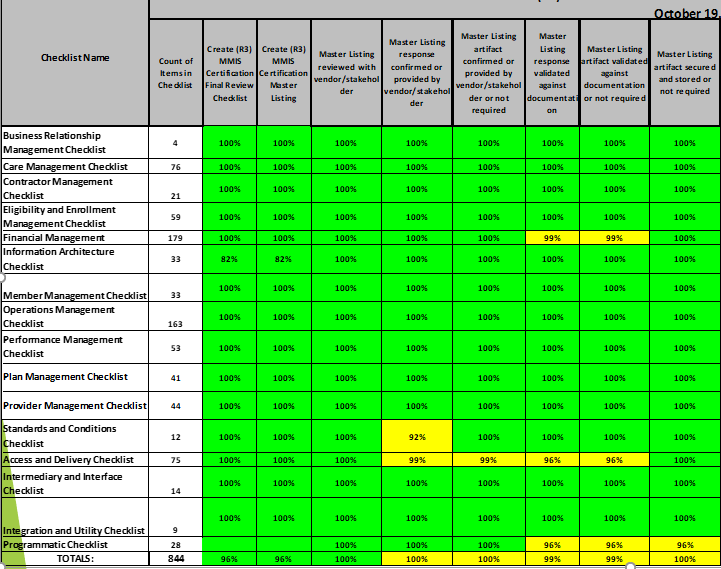Certifying a Medicaid Management Information System is a lot like building a house. The desired outcome is obvious, but unless you’ve built a house before, it’s hard to know where to begin. As any engineer or building contractor understands, even the best designs and plans can be interrupted through external factors, such as weather delays, material availability, or labor. These are issues encountered by all, but the ability to finish on time, on budget, and to the customer’s satisfaction in the face of these hurdles is the measure of success.
netlogx supported the most recent CMS Certification from the MECT 2.2 Toolkit for the State of Indiana. This involved navigating the toolkit, analyzing the checklists, collaborating with state, IV&V and system vendors, and regularly meeting with CMS. As you can probably imagine, it is not easy to collect, agree, and develop cohesive responses and demonstration across different business units, vendors, leaders, checklists, and experiences. Now imagine doing all that while keeping up with all the responsibilities of your daily work.
To prove and validate requirements a state can expect to provide a large volume of artifacts. Based on Indiana’s experience they may be anywhere from 3,000 to 5,000 artifacts. It is inevitable that personally identifiable information (PII) and personal health information (PHI) will be present so it is important to establish a process for the secure exchange and storage of the documents. Each artifact must go through multiple quality assurance processes. netlogx reviews every single artifact and response to review the content and formatting. Subject matter experts (SME’s) are assigned to oversee the checklists related to their area of expertise.
To help organize and structure the volume of work, a house of quality tool was customized to track and report clearly for each phase and milestone of the project. Below is a preview of the house of quality used for Indiana:

The house of quality tool allows for clear tracking and reporting down to the granular level of each checklist. This level of detail is important to capture as it clearly illustrates how each checklist and milestone progression ties into the big picture of the whole project.
Throughout the course of the certification project, unexpected challenges and issues occurred. For example, several months prior to the submission of checklists, CMS announced a new MECT toolkit. netlogx performed a complete crosswalk analysis of the two (2) toolkits to assist Indiana in determining which toolkit made the most sense to use. Based on the changes, Indiana decided to utilize the new toolkit.
Preparing for the CMS on-site review can also present its own challenges. A presentation and system demonstration are required for each of the fifteen (15) checklists as well as a welcome session and system overview. netlogx coordinated approximately 100 meetings in an eight-week time span to design and practice the presentations. Scripts and navigation guides were developed for each checklist to assist the presenters and system navigators during the demonstrations and utilized as a contingency plan if a presenter or navigator was unable to attend the on-site sessions due to unforeseen events.
Considering the volume, complexity, and dynamic nature of a certification process, it is important to have a strong project management team like netlogx. Providing quality and reasonable access to healthcare for Medicaid recipients is an enormous responsibility presented to each state. Many daily system users in a state are focused on solving unique problems for different patients and situations. Because of the significance of the work within the different business units, it is important to minimize the staff time away from their daily duties.
It is our goal as a project management organization to work through the logistical details to effectively drive the project forward by efficiently collaborating with the system and state experts to obtain certification. We take a “house of quality” approach to organize, plan, and execute the tasks to bring a state enhanced federal funding for their Medicaid management information system.

Andrew is a Senior Consultant with over ten years of experience in a variety of fields related to Medicaid IT systems, hospital Construction and technical integration, public health, telecommunications, and residential construction. He’s currently a Project Manager for The My Healthy Baby Program which is a state operated program that connects pregnant Hoosiers to local services all across Indiana.
Andrew holds a PMP Certification and is a certified Scrummaster.



